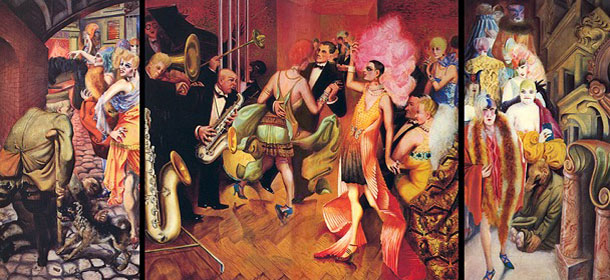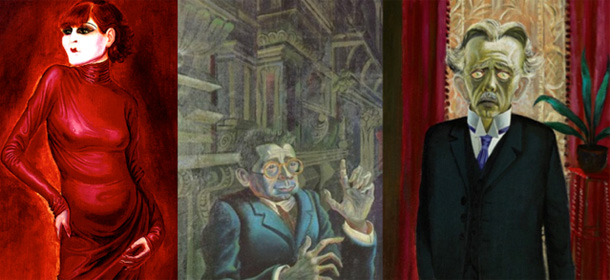PORTFOLIO
Portrait
Otto Dix
The unsparing painter
Otto Dix (1891-1969) is a chronicler of his time. Like hardly any other German artist, he almost brutally captured the experiences of the First World War and the emotional state of being human in his paintings in the Weimar Republic. What art historians describe as "New Objectivity" or "New Realism" is a rather dry term for the incomparable realistic intensity of his paintings. To this day, they have not lost their relevance and topicality.
Hurt and vulnerable characters, the loneliness of human existence and existence in the rage of the world were his themes−and these he painted mercilessly direct and unadorned.
His self-portraits are legendary, iconographic. Particularly Dix's Cycle of War paintings, his triptych, created out of the experiences of the First World War, reflect the inimitable terror of war, even decades later.
They are touching and frightening at the same time. Hardly any other artist had consistently fought at the front as long as Dix. He and his contemporaries such as George Grosz, Christian Schad or Rudolf Schlichter saw it as their duty to act in a socially critical manner. For Dix, as for many artists of the Weimar Republic, the uncorrupted view of humanity ended in the disaster of National Socialism's degenerate art.
“Otto Dix – The relentless painter” explores the influence and relevance of Otto Dix's "New Realism". How much did the First World War shape the view of the world, of painting, of society in the 1920s? The film aims to capture the individual in the context of his time, the war and the self-portrait from a biographical and also a socio-historical perspective. Otto Dix's dissecting paintings provoked a consternation almost 100 years ago that remains palpable to this day.
Buch / Regie
Nicola Graef
Produktion
2016, arte/WDR
45 min.
BACK TO PORTFOLIO

